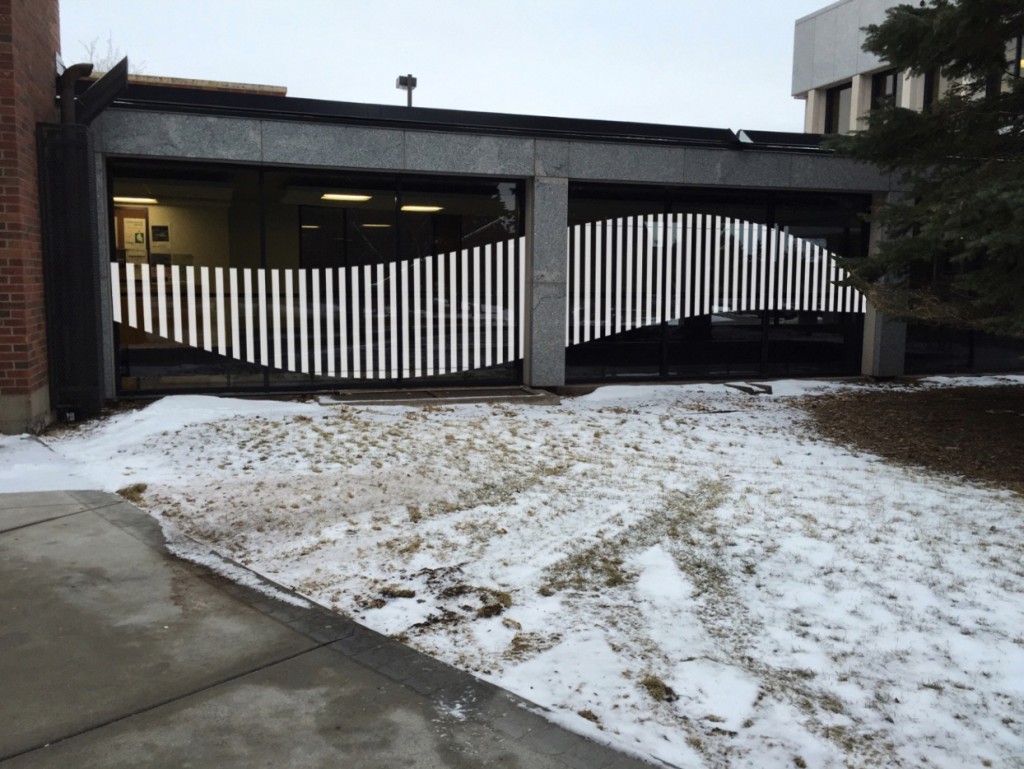BY AISLING DOHENY | News Editor | The Statesman

Birds colliding with windows, something UMD’s Office of Sustainability coined as a bird-strike, is a phenomenon occurring on campus. Assistant professor Darren Houser is searching for a solution. Teaming up with the Office of Sustainability and other members of faculty and staff, Houser will dedicate a portion of his spring 2015 course, Sustainability Studio, Theory and Practice, to implementing designs that will stop birds from crashing into windows.
A similar course section occurred last semester, too. Houser was asked to include a bird-strike project in his Spring 2015 course.
“I was contacted by Mindy Granley from Sustainability and David Beard from Writing Studies, and I jumped at the opportunity,” Houser said. “It was a way to get involved with campus and break away from an insulated classroom experience.”
Roughly five weeks of the semester-long course was spent on designing structures and other compositions that could be placed on or near campus windows.
Students proposed their projects and one design was selected as the winner based on functionality.
Yinghui Meng, senior and Studio Art major, was among the members of the winning group.
Meng said the group collaborated together, using Photoshop and constructing 3D models of their ideas.
“We developed the sculpture to go on the windows to block the birds, because otherwise birds think they can just keep flying,” he said.
Though Meng and his group’s design was the winning project, it may not be going up on any windows.
This spring, Houser is continuing the project and making it more focused. He said that he will use last semester’s designs as inspiration.
“The intention for next semester is to find our location, get the materials, figure out the limitations, figure out a design, and at the end of the semester we’ll be able to put it up as a class,” Houser said.
Houser is using the remaining funds from a grant last fall to continue the bird-strike project.
The grant, worth $2,500, from the Institute on the Environment was rewarded for this particular project with the students.
“We’re extending it out and doing a 2.0 version of it,” Houser said. “The projects that were put forth last semester didn’t fall into the budget.”
According to Houser, the Spring 2016 class will hone on in and focus on one spot.
There are four primary problematic areas on campus that deal with a lot of bird-strikes: Sports and Health Center, Bohannon Terrace, Concourse A (the hallway that connects to the Darland Administration Building) and the Chester conference room.
Duluth is a hot-spot along the migration route. Migrating birds only see reflections of landscapes in windows and mistake the reflection for an open space
“People have been noticing it for years,” said Houser.
Meng admitted to not being familiar with the bird-strike issue before the course last semester.
“Just last Thursday, though, I saw a dead bird with a broken neck outside of a door,” he said. “I didn’t believe it last semester, but it is real.”
Come spring at least one window of the four trouble areas will have an added design to it. It may be just a matter of time before bird-strikes are a thing of the past.
